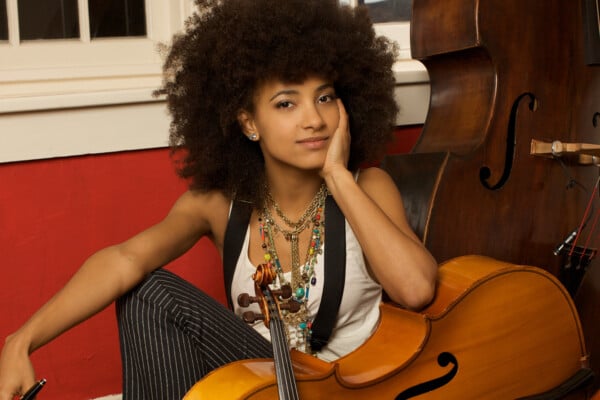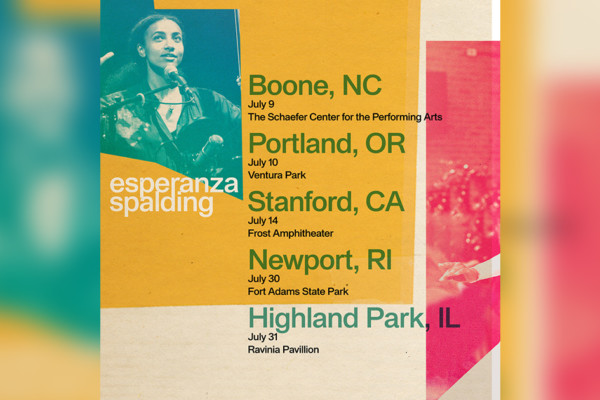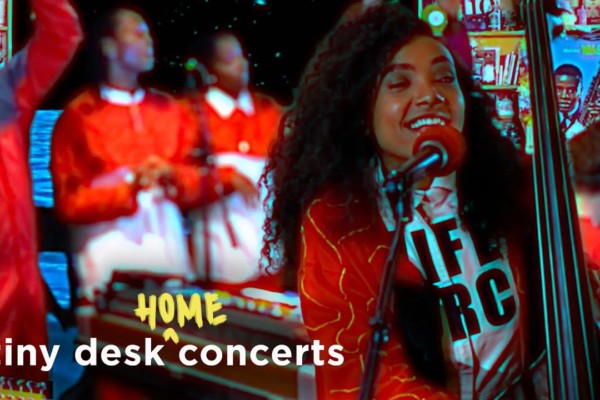Bass Players To Know: Esperanza Spalding
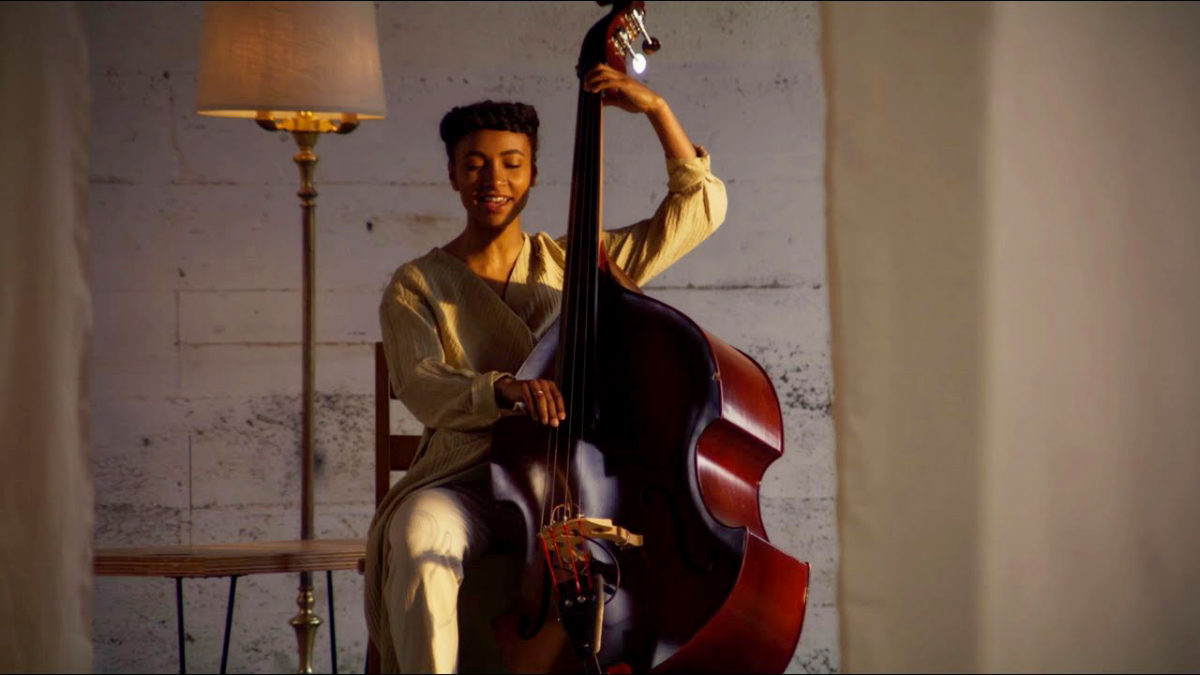
Great artists undergo evolution. They study, create, establish themselves as an artistic force, and then re-envision what their art could be. They constantly search for meaning, push for acceptance, and pursue self-expression. Esperanza Spalding is one of these artists. Her talents as a vocalist, upright and electric bassist, composer, and artistic pioneer have kept her at the forefront of jazz and pop for over a decade. Every release has carried the stamp of someone who truly evolves their craft—it’s no wonder they’ve resulted in multiple Grammy awards and industry accolades. Meanwhile, her contributions as a featured guest leave an indelible sonic handprint, one that is unmistakably Esperanza. In addition to recording and touring the world over, she has served as an educator, artist advocate, and philanthropist, making her not only a gifted musician, but an essential member of the artistic community.
Who Is Esperanza Spalding?
Esperanza grew up in Portland, Oregon and by the age of five, was already performing with the Chamber Music Society of Oregon as a violinist. Though she took to other instruments, including woodwinds and guitar, Esperanza found greater footing as a vocalist and bassist. She received academic scholarships to Portland State University and Berklee College of Music. In 2006, she had graduated from Berklee College of Music, accepted a position as an educator at Berklee, and released her first record, Junjo.
By 2008, Esperanza released a self-titled record after signing a deal with the label Heads-Up. Now rubbing elbows with the who’s who of modern jazz, her resume included tours with saxophonist Joe Lovano and guest appearances on records by Mike Stern, Fourplay, and Stanley Clarke, among others. Her next project, Chamber Music Society, blended classical instrumentation with improvisation. By stringing together complex rhythms, intricate harmonies, and surprising arrangements, she managed to create something that truly pushed the boundaries of contemporary classical and jazz.
In 2011, Esperanza won the Grammy Award for Best New Artist, an accolade that rarely goes to members of the jazz community. Her next recording, Radio Music Society, brought her greater recognition in the form of a Soul Train Music Award and Smithsonian American Ingenuity Award. Meanwhile, she continued to collaborate with artists in the pop and jazz world, including Janelle Monae, Bruno Mars, Common, Terri Lynne Carrington, and Jack DeJohnette.
Spanning the release of three more solo records, Emily’s D+Evolution (2016), Exposure (2017), and 12 Little Spells (2018), Esperanza took innovative approaches to both the recording process and distribution of her music. She took the conceptual approach to composition, documented the process on social media, and used music videos to enhance the creative experience.
Balancing artistry with education and philanthropy, Esperanza became a professor at Harvard University and spearheaded the ‘Songwrights Apothecary Lab.’ She has donated merchandise sales to non-profit organizations, worked with various human rights organizations, and supported The Trust for Public Land.
Let’s Talk Style
While some bass players serve as musical chameleons, adapting their sound, tone and approach to other artists’ records, Esperanza does quite the opposite. She is present and clearly acknowledged as a contributor. Her work exudes passion, soul, and elegance—no doubt a representation of who she is on and off the stage. Her style is cosmopolitan; a modern musical melting pot that somehow seems to be both in-fashion and ahead of its time.
An avid student of harmony, song form, and personal expression, she constantly pushes the boundaries and questions musical convention. She’s the perfect musical hybrid, marrying rhythmic aptitude with harmonic sophistication and the daring spirit of an artist. If anything, her style is defined by the evolution of her body of work and the willingness to explore every creative tool available.
At first glance, the tools seem to be the human voice, upright and electric bass. This provides her with an innate sense of counterpoint and accompaniment. Dig deeper and you’ll discover how she is on a never-ending search for new tools—desperately seeking innovative ways to explore the space between the upper and lower voices. The result is complex harmonies, lush vocals, worldly rhythms, and intricate phrases.
These tools get put to use in different ways, yet the common thread is musical juxtaposition. She highlights the tension between consonance and dissonance, high and low, dense and sparse, and ultimately makes the listener question whether or not the music resonates with their ears. Whether it strikes a chord or strikes a nerve, it’s meant to make a statement, as all great art attempts to do.
Where Can I Hear Her?
“I Know You Know” (Esperanza Spalding: Esperanza)
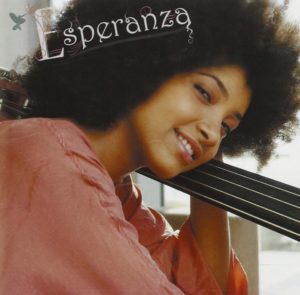 Attention grabbing from the very first note, this track is pure jazz-pop elegance. Spalding establishes a punchy feel out of the gate, relying heavily on syncopation and a deep pocket. Juxtaposed by a hearty swing, Latin-inspired rhythms, and triplet phrases, Spalding keeps the song rhythmically exciting. Marry that with sophisticated harmony, a melody that gets stuck in your head, and a magnificent vocal performance, and you find yourself listening to the work of a truly gifted musician.
Attention grabbing from the very first note, this track is pure jazz-pop elegance. Spalding establishes a punchy feel out of the gate, relying heavily on syncopation and a deep pocket. Juxtaposed by a hearty swing, Latin-inspired rhythms, and triplet phrases, Spalding keeps the song rhythmically exciting. Marry that with sophisticated harmony, a melody that gets stuck in your head, and a magnificent vocal performance, and you find yourself listening to the work of a truly gifted musician.
Listen: iTunes | Amazon MP3
“Earth To Heaven” (Esperanza Spalding: Emily’s D+Evolution)
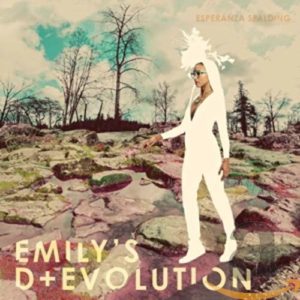 Beginning with an ominous and stormy sounding groove, Spalding plays with intensity and overdrive, bringing a feeling of weight to the music. The verse integrates syncopated rhythms, harmonic dissonance, and counterpoint between the bass and melody. With constant changes in dynamics and feel, the song is overwhelmingly theatrical and evokes a sense of drama. There’s a story being told over the course of this song, integrating personal struggle, biblical undertones, and the desire to ascend to a greater place.
Beginning with an ominous and stormy sounding groove, Spalding plays with intensity and overdrive, bringing a feeling of weight to the music. The verse integrates syncopated rhythms, harmonic dissonance, and counterpoint between the bass and melody. With constant changes in dynamics and feel, the song is overwhelmingly theatrical and evokes a sense of drama. There’s a story being told over the course of this song, integrating personal struggle, biblical undertones, and the desire to ascend to a greater place.
Listen: iTunes | Amazon MP3
“Song For Pepper” (Mike Stern: Big Neighborhood)
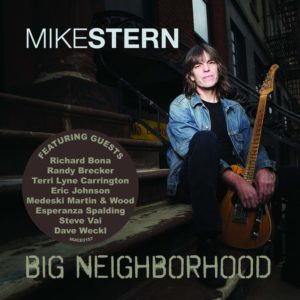 Spalding is featured front and center with sparkling vocals and brilliant upright playing. Her graceful touch and organic tone provide harmonic grounding, melodic counterpoint, and an African-inspired rhythmic bounce. As a vocalist, she enhances the melody of the song, singing in unison or harmonizing with Stern’s guitar playing. It’s a delight to hear Spalding’s unique voice and sophisticated artistry on such an eclectic project, especially since she’s featured alongside bass players like Richard Bona, Victor Wooten, and Chris Wood. There are no bones about it—Spalding has earned her spot among the jazz heavyweights, proudly standing beside cutting-edge instrumentalists and other bass players to know.
Spalding is featured front and center with sparkling vocals and brilliant upright playing. Her graceful touch and organic tone provide harmonic grounding, melodic counterpoint, and an African-inspired rhythmic bounce. As a vocalist, she enhances the melody of the song, singing in unison or harmonizing with Stern’s guitar playing. It’s a delight to hear Spalding’s unique voice and sophisticated artistry on such an eclectic project, especially since she’s featured alongside bass players like Richard Bona, Victor Wooten, and Chris Wood. There are no bones about it—Spalding has earned her spot among the jazz heavyweights, proudly standing beside cutting-edge instrumentalists and other bass players to know.
Listen: iTunes | Amazon MP3 | Spotify
How about you? What’s your favorite tune or album with Esperanza Spalding?
Please share with us in the comments.
Ryan Madora is a professional bass player, author, and educator living in Nashville, TN. In addition to touring and session work, she teaches private lessons and masterclasses to students of all levels. Visit her website to learn more!

